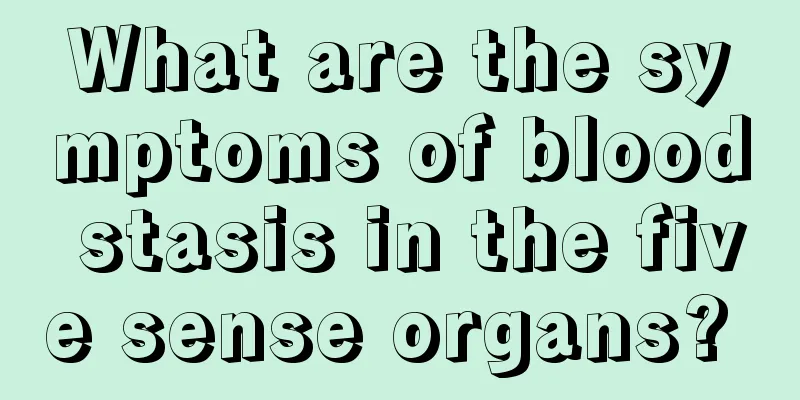What are the symptoms of blood stasis in the five sense organs?

|
Of course, when symptoms of blood stasis appear, they will first show up in the facial features. At this time, the person's complexion will often show different symptoms such as purple, brown, and blue, which often lead to restlessness, and even crying and laughing, madness and insanity. There will also be manifestations in the tongue coating. Purple spots will often appear on the tongue, small purple bubbles will appear on the lips, and the whites of the eyes will appear very turbid. (1) Mental state If blood stasis attacks the heart, one will feel restless, unable to sit still, become mad, cry and laugh at the same time, be frightened, suffer from insomnia and aphasia, etc. (2) Color The face of a patient with blood stasis often appears gray or dull, and spots of varying sizes appear on the skin, in different colors such as purple, brown, and green. (3) Tongue quality The tongue has the most abundant blood vessels, and the tongue can show the lesions of internal organs. Diseases such as blood deficiency, blood stasis, and blood heat can be reflected in the tongue. Therefore, no matter which part of the body is stagnant with blood, it will appear as blue or purple spots on the tongue. Some tongues are faintly purple in color with unclear edges; there are also cases where there is no abnormality on the upper part of the tongue but the veins under the tongue are bulging. (4) Lips and cheeks Dark brown lips, dry and rough texture, uneven lip color distribution, or small raised purple bubbles on the mucosa on both sides of the cheeks are all signs of blood stasis. (5) Eyes The whites of the eyes of patients with blood stasis syndrome appear cloudy, gray, or partially dark. Many vascular diseases such as coronary heart disease or ischemic stroke are considered by traditional Chinese medicine to belong to the category of "blood stasis syndrome". The common characteristics of blood rheology changes are: increased blood viscosity; enhanced blood cell aggregation; increased erythrocyte sedimentation rate; and increased hematocrit. All this indicates that the blood is in a highly thick and sticky state, with decreased blood fluidity, increased coagulability, and abnormal rheology, which leads to circulatory disorders and the formation of blood stasis, resulting in abnormal physiological functions of systemic or local blood circulation. Activating blood circulation and removing blood stasis is a treatment method that uses drugs or other traditional Chinese medicine treatment methods to improve blood viscosity and blood rheology, increase blood flow, and correct blood circulation and microcirculation disorders. |
<<: What are the benefits of washing your face with milk?
>>: What are the symptoms of lower extremity venous thrombosis
Recommend
Body weight remains unchanged while fat percentage decreases
Many people measure their body fat percentage bef...
What to do if the sour water jar turns white
Many places have the tradition of making kimchi, ...
What is the best way to treat blue veins on the back of the hand
As you stand for longer or carry more weight, the...
What does sweating on the head of your feet mean?
Sweating on the head while soaking your feet is v...
The harm of substation to people
The reason why we can always use electricity in o...
How to cut green onions without irritating your eyes
There are many friends who love to cook. We also ...
There is always a dull pain on the left side of the head
Many people will say that they always have one pr...
Is sun protection effective in preventing adult skin cancer?
In our daily lives, we cannot ignore skin cancer ...
The shelf life of homemade passion fruit jam
When making passion fruit jam yourself, you must ...
Can I eat more yam
Although yam is a food with good nourishing effec...
What are the hazards of silkworm sand pillow
In modern society, people’s daily household items...
How long can a woman with tongue cancer live
Once tongue cancer progresses to the late stage, ...
Physiological symptoms of depression should not be ignored!
The word depression is very scary. Depression is ...
Cactus radiation protection
We often hear that plants can protect against rad...
Can women use self-examination in the early stages of breast cancer? 4 things to note about breast cancer in women
The incidence of breast cancer in women is very h...









